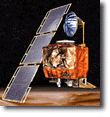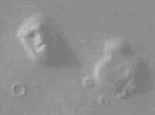 It was no accident that
NASA lost
contact with the Mars Climate Orbiter. They claim it is, but THE
UNCOVEROR knows better.
It was no accident that
NASA lost
contact with the Mars Climate Orbiter. They claim it is, but THE
UNCOVEROR knows better. It was no accident that
NASA lost
contact with the Mars Climate Orbiter. They claim it is, but THE
UNCOVEROR knows better.
It was no accident that
NASA lost
contact with the Mars Climate Orbiter. They claim it is, but THE
UNCOVEROR knows better.Mary Hardin
Jet Propulsion Laboratory, Pasadena, CA
(Phone: 818/354-5011)
Joan Underwood
Lockheed Martin Astronautics, Denver, CO
(Phone: 303/971-7398)
RELEASE 99-113
A failure to recognize and correct an error in a transfer of information between the Mars Climate Orbiter spacecraft team in Colorado and the mission navigation team in California led to the loss of the spacecraft last week, preliminary findings by NASA's Jet Propulsion Laboratory internal peer review indicate.
"People sometimes make errors," said Dr. Edward Weiler, NASA's Associate Administrator for Space Science. "The problem here was not the error, it was the failure of NASA's systems engineering, and the checks and balances in our processes to detect the error. That's why we lost the spacecraft."
The peer review preliminary findings indicate that one team used English units (e.g., inches, feet and pounds) while the other used metric units for a key spacecraft operation. This information was critical to the maneuvers required to place the spacecraft in the proper Mars orbit.
"Our inability to recognize and correct this simple error has had major implications," said Dr. Edward Stone, director of the Jet Propulsion Laboratory. "We have underway a thorough investigation to understand this issue."
Two separate review committees have already been formed to investigate the loss of Mars Climate Orbiter: an internal JPL peer group and a special review board of JPL and outside experts. An independent NASA failure review board will be formed shortly.
"Our clear short-term goal is to maximize the likelihood of a successful landing of the Mars Polar Lander on December 3," said Weiler. "The lessons from these reviews will be applied across the board in the future."
Mars Climate Orbiter was one of a series of missions in a long-term program of Mars exploration managed by the Jet Propulsion Laboratory for NASA's Office of Space Science, Washington, DC. JPL's industrial partner is Lockheed Martin Astronautics, Denver, CO. JPL is a division of the California Institute of Technology, Pasadena, CA.
 The real truth is that the Martians who
built the mars face still exist, and have grown tired of humans spying
on them. They shot the probe down.
The real truth is that the Martians who
built the mars face still exist, and have grown tired of humans spying
on them. They shot the probe down.
Harvey Kurtz, a former NASA employee, has revealed that Martians still exist. They now live underground, as the surface of Mars is uninhabitable. About 1500 of our years ago, its climate radically changed, and the natives of the red planet were almost wiped out. At first, they dug canals to bring water from their polar ice caps, but soon had to burrow into the ground. This was all discovered by the Viking probe in the seventies.
"I'll give NASA this," says Kurtz, "their explanation of what happened is at least plausible, unlike the Air Force's explanations of Roswell, but it simply isn't what happened. " Kurtz predicts that the Mars Polar Lander will also be destroyed. You read it here first.
For kids interested in NASA you can find plenty of children activities on the Internet that might interest them, like interactive world maps that show what the world looks like from space.